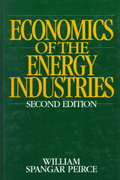Question
A wide variety of online and print media sources throughout the world share articles and issues experienced on projects. To keep abreast with contemporary project
A wide variety of online and print media sources throughout the world share articles and issues experienced on projects. To keep abreast with contemporary project management issues, students will search for project management news from recognized sources to develop their understanding and knowledge about complexities and uncertainties in projects. This will help them to participate in, contribute to, lead, and succeed in future project opportunities.
While each of the four News Review Assignments will have a different topic to review, each should follow a similar process:
- Choose a recent Article. The news should be taken from a business news source such as:
- The Globe and Mail
- Maclean's
- The Vancouver Sun
- The Economist
- Time
- The New York Times
- The Independent
- The Guardian
- Project Management Review, or
- other recognized newspapers, journals, or magazines.
- Articles should discuss current events and should be no more than two months older than the assignment due date.
- Avoid using articles published as editorials (opinions, columns), press releases, blogs, or general sources. While often interesting and informative, these tend not to be as thorough or present only one opinion on a topic.
- Introduction
- The length of an introduction is usually one paragraph in length. Include a few opening sentences that announce the author(s) and the title, publisher, date of publication, and briefly explain the topic of the text.
- The introduction should present the aim of the article and summarize the main finding or key argument.
- Conclude the introduction with a brief statement of your evaluation of the text. This can be a positive or negative evaluation or as is usually the case, a mixed response.
- Summarize the Article
- Present a summary of the key points along with a limited number of examples.
- You can also briefly explain the author's purpose/intentions throughout the text and describe how the text is organized.
- The summary should only make up about a third of the critical review.
- Critique the Article
- The critique should be a balanced discussion and evaluation of the strengths, weaknesses, and notable features of the text.
- Remember to base your discussion on specific criteria.
- Good reviews also include other sources to support the evaluation (remember to reference).
- You can choose how to sequence your critique. Here are some examples to get you started:
- Most important to least important conclusions you make about the text.
- If your critique is more positive than negative, then present the negative points first and positive last.
- If your critique is more negative than positive, then present the positive points first and negative last.
- If there are both strengths and weaknesses for each criterion you use, you need to decide what your judgement is overall. For example, you may want to comment on a key idea in the text and have both positive and negative comments. You could begin by stating what is good about the idea, and then concede and explain how it is limited in some way. While this example shows a mixed evaluation, overall you are probably being more negative than positive.
- In long reviews, you can address each criterion you choose in a paragraph, including both negative and positive points. For very short critical reviews (one page or less) where your comments will be briefer, include a paragraph of positive aspects and another of negative.
- You can also include recommendations used in the critique section on how the text can be improved in terms of ideas, research approach, theories, or frameworks.
- Conclusion
- This is usually a very short paragraph. Restate your overall opinion of the text.
- Briefly present recommendations.
- If necessary, include some further qualification or explanation of your judgement. This can help your critique sound fair and reasonable.
- Cite Your References
Step by Step Solution
There are 3 Steps involved in it
Step: 1

Get Instant Access to Expert-Tailored Solutions
See step-by-step solutions with expert insights and AI powered tools for academic success
Step: 2

Step: 3

Ace Your Homework with AI
Get the answers you need in no time with our AI-driven, step-by-step assistance
Get Started


